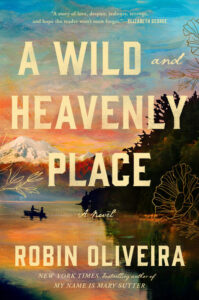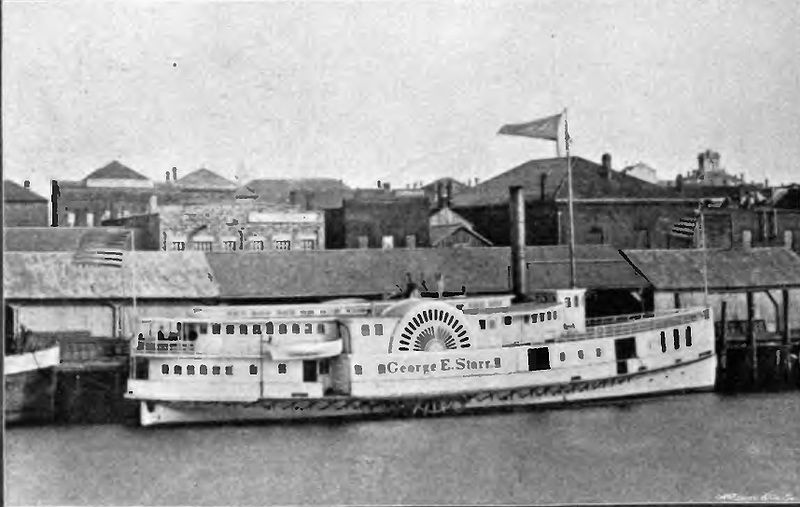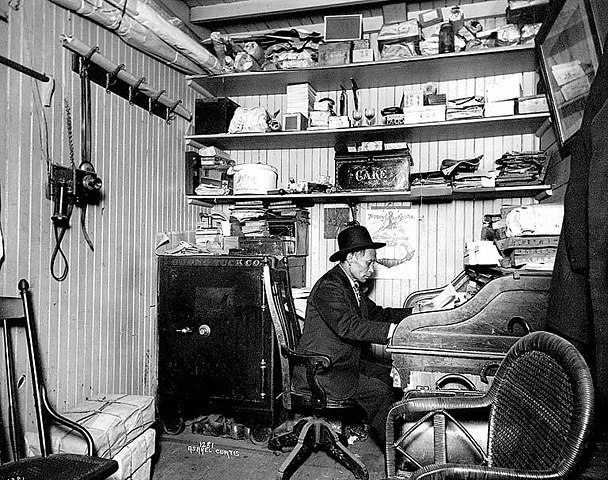
Titanic obstacles to true love (Glasgow, Scotland, 1878 – 1879; Seattle, Newcastle, San Juan Islands, Washington Territory, 1879 – 1981): How long can you hang on to a promise of love?
In A Wild and Heavenly Place, Robin Oliveira lets us feel the ache of an unlikely love between two people separated by Britain’s social class system: Hailey from the upper-class, and Samuel, the lowest. Each eyed the other from segregated levels in a Glasgow, Scotland church. She sitting higher, he staring up at her.
Herculean barriers – societal, historical, man-made, environmental – thwart two seventeen-year-olds from being together. Their story can make the naysayers believe in instant love, first love.
The central question driving Oliveira’s fourth historical novel is whether Samuel and Hailey ever come together? Can two people navigating the “edges” of two worlds on two continents ever find their way back to each other when people, events, disasters conspire against their love? Can profound love conquer all?
Oliveira goes to great lengths to delve into the truths and emotions of her stories, well-informed by her wide-ranging research, heritage, and life experiences.
The novel is this blog’s fourth review of all four of her creative historical works, in which humanity always shines through her flowing, glowing prose:
- My Name is Mary Sutter, set during the Civil War, drawn from Oliveira’s experience as a registered nurse.
- In Winter Sisters the nurse becomes a physician and activist for marginalized women. Set in Albany, New York, where the author’s from.
- I Always Loved You is about a conflicted, passionate love between two famous artists, Mary Cassatt and Edward Degas. Set in Paris, a place Oliveira loves.
All her novels are set in the 19th century.
A Wild and Beautiful Place is about soulful love, as well as a passion for a place of “spellbinding” beauty and wildness – the Pacific Northwest – from an author who lives on Cougar Mountain near Seattle. Near one of the novel’s important historical settings: Newcastle, a pioneering coal mining town people headed for with a gold rush mentality as there was money to be made.
Coal mining and the shipbuilding history fueled by coal in both Glasgow and Seattle are two industries that altered the fates of Samuel and Hailey. Most of the novel takes place journeying to and in Washington Territory before it became a state in 1889, eight years after the novel ends.
The San Juan Islands in the Puget Sound inspired the novel’s title, a summer place the author has the fondest of memories. Referred to as the “Mediterranean of America” in an 1879 news clipping introducing the last chapters of five parts.
Robin Oliveira has a way of telling the most difficult of circumstances in tender, compassionate prose using history to guide the storytelling. In this novel, exploring “the very truth and nature of love.” Or as Samuel said to himself in Glasgow (Part 1), “What a strange thing desire is . . . it teaches you all you need to know”; and also declares to Hailey his boundless love that he’ll go, “Anywhere, anytime, anything. If you need me …” You’ll be amazed and heartened at what that turns out to mean.
A few words about the context of Hailey’s and Samuel’s lives when they enthralled one another in Scotland, where the author’s ancestors hailed from. Hailey’s father, an engineer who owned a coal mine when Glasgow’s coal (and shipbuilding) industries were thriving, on the heels of the Industrial Revolution. When Samuel immediately picked up on how Hailey “radiated happiness.” What he perceived was someone with all the comforts of wealth but not any experience with the downtrodden.
Samuel and his beloved five-year-old sister Alison, clinging to him, are orphans. Hailey has a younger brother, Geordie, also five; he plays a pivotal role in how Samuel meets her parents: a loving father repressing his guilt that it was his mine that blew up, whereas her mother is cold-hearted, uppity, distasteful. Geordie’s role expands dramatically, showing us the depth of sisterly love and devotion, mirroring Samuel’s brotherly love.
Yet their lives have been the polar opposite. Samuel’s intensely focused on finding food to nourish Alison, revealing from the start his selflessness after being subjected to the cruelty of an historic orphanage, Smyllum. When we meet them they’ve escaped the abuse, but living in a different type of inhumane conditions: overcrowded, squalid, disease-spreading tenement housing. Not too far away, shipbuilding alongside the River Clyde is where Samuel earned little monies enduring backbreaking labor shoveling coal to power ships. You’ll feel the poignancy and irony of his filthy, dangerous job while he dreams of building and owning his own ship. For him, the “lines and elegance” of a ship were “G-d’s gift to man so that we could see the wonders of the world.”

What marvelous spirit Samuel has despite the life he’s had! The same spirit witnessed when the story crosses an ocean to Seattle, where most of it is set. A city recently burned down but not deterred. A “collective boosterism” seen in the rebuilding and shaping of a city enveloped by “unspoiled beauty.”
Steamships propel Samuel’s re-making of himself. In assured prose that makes the crafting a “mix of bible and suggestion,” its authenticity forged, in part, from the author making sure she knew “how to drive a boat, read nautical charts, plot routes.” (Excerpted from a conversation with her publisher). Most of the paddlewheel steamers referenced were real ones, like this one:

The “forgotten history” Oliveira writes about is also seen early on with the historic collapse of the City of Glasgow Bank – “one of the most severe tests of the British banking system … but hardly known.” We see how it indiscriminately impacted families, including Hailey’s. One of many examples of how history penetrates fiction.
The drenching, raw weather in Glasgow and the Pacific Northwest is embodied in larger environmental issues. Especially toxic coal dust and coal waste piles, or “slag heaps,” that are cancerous and under the right conditions explosive.
The discrimination seen in Glasgow between societal classes is also recounted in Seattle’s prejudice towards Blacks and Chinese migrant and immigrant workers. The hypocrisy of double-standards exposed as exceptions were made for those who contributed greatly to Seattle’s growth and industry. An example, Chin Gee Hee, who provided the labor force that built the first railway enabling people to move easily and swiftly to the coal mining towns outside the city – the Seattle and Walla Walla Railroad.

by Asahel Curtis [Public domain] via Wikimedia Commons

by Carleton Watkins [Public domain] via Wikimedia Commons
Fictionally, two Black characters – Pruss born a slave and his son John Salvation (perfect name) saved from the shackles – add so much richness, warmth, and friendship to the story. Samuel met them on a steamship shoveling coal headed for Washington Territory. To Hailey.
There’s also the role of Salish indigenous tribes who owned the land that became Seattle. The Duwamish and Suquamish peoples Henry Yesler, a legendary figure in Seattle’s early history, employed, but to tell their full story decades afterwards deserves another historical novel.
There’s never enough of Native American “forgotten history.” Might the author craft it? Once again uncovering and creating moving stories to enlighten and captivate.
Lorraine